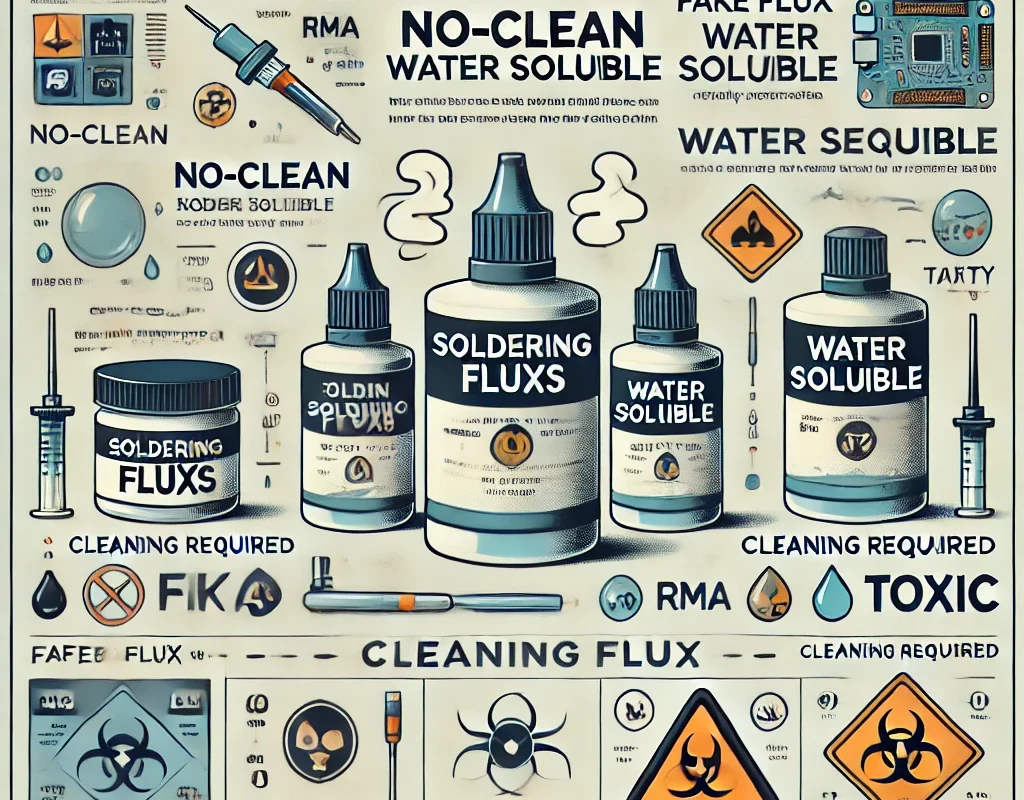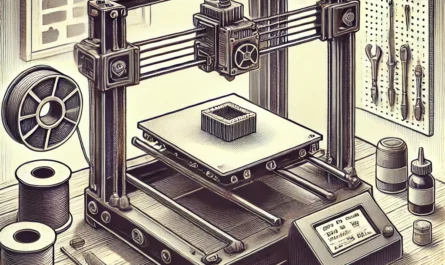General Introduction
Flux is a key component in modern soldering, determining the quality, reliability, and durability of solder joints. With the rise of DIY electronics, smart devices, and microcontroller projects, the need for a detailed look at current flux options has become essential.
Types of Modern Fluxes
- No-Clean Flux
- Features: Does not require cleaning after soldering
- Pros: Convenient for quick, in-field, or temporary jobs
- Cons: Can leave a thin resin layer that may degrade over time and become resistive
- RMA (Rosin Mildly Activated)
- Base: Rosin with a mild activator
- Good for: Rework and repeated soldering cycles
- Cleaning: Recommended for high-reliability systems
- Water Soluble Flux
- Highly active, but residues are corrosive
- Requires warm water cleaning
- Best for: Production environments, not suitable for DIY or hobby work unless properly cleaned
Comparison of Popular Models
| Model | Type | Composition | Cleaning | Safety |
|---|---|---|---|---|
| Amtech NC-559 | No-Clean | Gel | Not required | Relatively safe |
| Kester 951 | No-Clean | Alcohol-based | Not required | Leaves no toxic residues |
| RELIFE RL-404 | RMA | Rosin + mild activators | Recommended | Safe after cleaning |
| Superior 30 | Water Soluble | Acidic base | Required | Unsafe if not properly cleaned |
Fake Fluxes: What to Watch For
The electronics market, especially online platforms, is full of counterfeit or low-quality fluxes. These are often:
- Labeled as “Amtech” but contain no real branding
- Sold in cheap packaging or unlabeled syringes
- Have a pungent, chemical smell or bubble violently when heated
Common Issues:
- Corrosion after just a few weeks
- Conductive residue that causes short circuits
- Toxic fumes, especially from unknown gel-type fluxes from unverified sellers
How to Avoid:
- Buy from authorized distributors or reputable electronics suppliers
- Check for batch numbers, proper labeling, and sealed packaging
- Prefer trusted brands: Amtech, Kester, ChipQuick, MG Chemicals
Recommendations and Best Practices
- For everyday DIY soldering with low risk: Use No-Clean (e.g., Amtech NC-559, Kester 951)
- For precision rework and high-load circuits: Use RMA-type fluxes and clean after use
- For mass production or fine-pitch work: Water-soluble fluxes with thorough cleaning are acceptable
- Avoid unknown brands or low-cost fakes — they can damage both hardware and your health
Always work in a well-ventilated area, use fume extraction, and wear protective gloves when handling fluxes.







